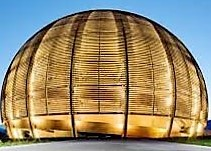Speaker
Description
Radiative-capture reactions leading to the formation of 7Be bear a particular interest in the field of nuclear astrophysics.
The most important ones are the 3He(α,γ)7Be and the 6Li(p,γ)7Be reactions.
The former is one of the primary sources of uncertainty in the prediction of the 7Be and 8B neutrino fluxes, being the first reaction of the 2nd and 3rd branch of the p−p chain. Despite its importance and the large number of experimental and theoretical works devoted to it, the knowledge of the reaction cross section at energies characterizing the core of the Sun (15 keV - 30 keV) is limited and further experimental efforts are needed to reach the desired (≈3%) accuracy.
The 6Li(p,γ)7Be reaction influences a variety of astrophysical scenarios, including big-bang and stellar nucleosynthesis, especially in relation to the primordial 7Li abundance problem. Since the production mechanism of 6Li and 7Li are completely different, the 6Li/7Li isotopic ratio can be used either to constrain the lithium production mechanisms and/or the galactic enrichment processes, e.g., the role played by spallation or by deep circulation in evolved stars. This, in turn, calls for an accurate determination of the 6Li(p,γ)7Be astrophysical S-factor. However, conflicting results of direct measurements have been published, reporting contradictory low-energy trends.
The precise knowledge on the external capture contribution to both reaction cross sections is crucial to assess the trend of the astrophysical factor at astrophysical energies. To this purpose, in this work we report on the indirect determination of the external capture contribution using the Asymptotic Normalization Coefficient (ANC) technique. The ANC is especially suited since the direct capture cross section is proportional to the square of the ANC, so the ANC approach provides a direct link to the reaction rate and to astrophysical applications. To extract the ANCs for the 3He+α and 6Li+p channels, the angular distributions of deuterons emitted in the 6Li(3He,d)7Be α- and p-transfer reactions were measured with high precision at beam energies E3He= 3.0 MeV and E3He= 5.0 MeV for both the transfer to 7Be ground state and first excited state. The ANCs were then extracted from comparison of DWBA calculations to the measured data and the zero energy astrophysical S-factors were calculated using the modified two-body potential method. Particular care was adopted to size the model dependence of the results.
In the case of the 3He(α,γ)7Be reaction, the zero energy astrophysical was found to equal 0.534±0.025 [0.015; 0.019] keVb (in square parentheses, the first contribution is the experimental error dominated by the statistical uncertainty, while the second contribution is the systematic error due to the model dependence). The result agrees with the recommended value by Adelberger et al. (Solar Fusion II) [1], reducing the uncertainty from 7.1% to 4.6%. More details can be found in Ref.[2].
In the case of the 6Li(p,γ)7Be astrophysical factor, the present independent study supports the recent extrapolation of Piatti et al. [3], and thus disfavors the conclusions drawn by He et al. [4]. The calculated zero-energy astrophysical factor was found to equal 96.5±5.7 eVb, the error being mostly due to systematic uncertainties arising from the variation of the geometric parameters of the adopted Woods-Saxon potential. This value is in excellent agreement with the extrapolated S factor to zero energy [S(0) = 95 ± 9 eVb] of Piatti et al. [3], with an uncertainty 1.6 times lower. A more detailed discussion is given in Ref.[5].
[1] E.G. Adelberger et al., Rev. Mod. Phys. 83 (2011) 195
[2] G.G. Kiss et al., Phys. Lett. B807 (2020) 135606
[3] D. Piatti et al., Phys. Rev. C 102 (2020) 052802
[4] J.J. He et al., Phys. Lett. B 725 (2013) 287
[5] G.G. Kiss et al., Phys. Rev. C 104 (2021) 015807
